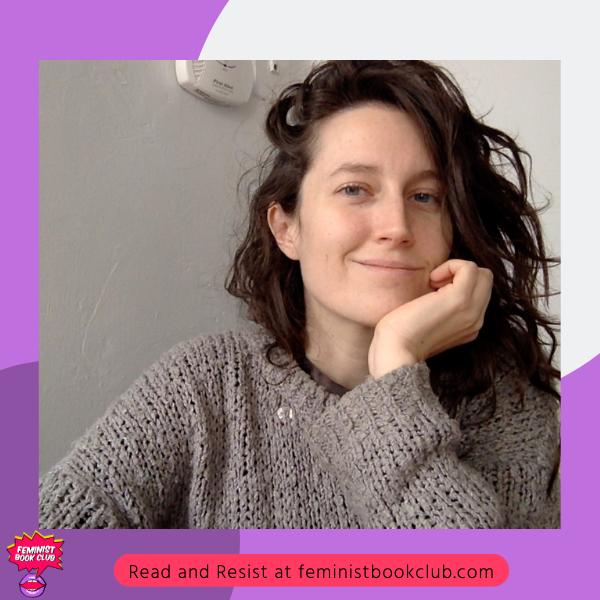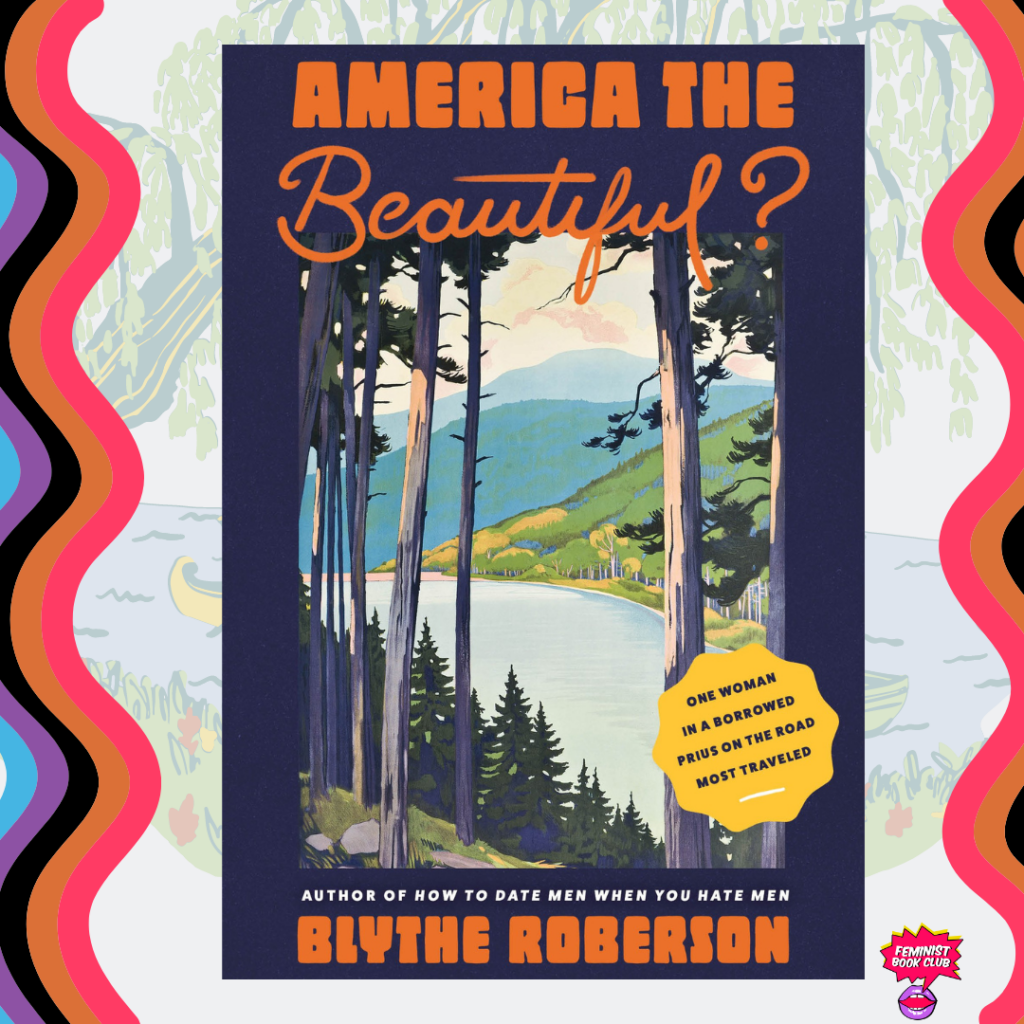On Tuesday, June 27, Feminist Book Club members had a Zoom hang with Blythe Roberson, author of America the Beautiful. Here are some of the highlights of our conversation from that evening.
What does being feminist mean to you?
What does it mean to me to be feminist? I read this book recently called The Right to Sex by Amia Srinivasan. There’s a quote that she uses to open it that is so great. I wish I had it written down somewhere. She said something along the lines of: “Feminism is not just an aesthetic thing or like some social movement. It’s like a plan to remake the entire planet by asking what it would be like if men and women and everyone were equal.” The answer is we don’t know yet, let’s find out. So I feel like that is my guiding line at the moment.
What was your biggest takeaway from your national park trip in the years since you went on it?
Since I went on the trip, the thing that has most risen to the top of my mind that I wouldn’t have without COVID-19 is the problems of over-visitation. Because I went on this trip in 2019 and some of the parks were so packed, it was very stressful to be there as a person who wants a chiller experience in nature and a person who doesn’t want to spend a long time finding parking. When I went to Zion, I think it was there that one of the park rangers told me that. She felt like she was working at Disneyland. That’s all become so much worse since COVID because outside was the only place that anyone could go. I obviously don’t have an answer for how to fix it or I would be the Assistant Secretary of the Interior.
I don’t know how to square the fact that being in nature is so important to being a human on this planet and the fact that like these 63 congressionally designated and protected areas like half of them at least are way over-visited. Zion has since instituted like a permit system and I know Rocky Mountain National Park has done it too where you have to have a permit to enter between like 10 am and 6 pm which is a good idea but it’s also noteworthy that the people that can get that permit is like my dad who’s like a retired white guy, who like has had every privilege in the world and now like can just sit in front of the computer at like 9 am on whatever day to make sure he gets the permit. Whereas someone who you know might have fewer resources can’t do that. That’s the thing I’ve been thinking about the most.
One of the questions that came up from our book chats was about the inacessibility of National Parks for people of color. From your experience and what you’ve seen, is that changing? Do you think that park visitors are becoming more diverse or is this still just like an old white guy thing?
It’s a good question. I mean, I didn’t spend too much time looking at how the demographics have changed since I wrote the book and now. I definitely, anecdotally, know so many cool Instagram clubs of women of color going outside. When I was writing this book, people told me I was gonna be unsafe in the parts because I was a woman and I know that a lot of like people of color feel unsafe in the parks partly because it’s just like we are going to be outside in the middle of nowhere surrounded by only white people, especially in states that are more conservative. I did find some National Park Service internal data where they interviewed people of color about what makes them less likely to go to parks and I was like number one is gonna be that they feel unsafe, but actually number one was just that people live far away from these places. Most of these parks are out west and for a million demographic reasons that I don’t, I need to explain to everyone like most people in America, especially people of color, live on the eastern side of the Mississippi.
Honestly and this is something that I kind of touch on a little bit at the end of the book, there’s so much nature in America that is not in these huge parcels of national parks and national forests and land managed by the Bureau of Land Management out west including city parks, state parks and stuff. There’s also a lot of the newer national parks that are more urban national parks. For example, Cuyahoga in Cleveland, which I didn’t go to on this trip, but I went to a couple of years later. Interestingly, the river that it’s named after was on fire in the seventies because it was so polluted but now it’s a national park and it’s near a lot of people. It’s in a population center and it’s really beautiful and it’s like you can actually go there.
So I think protecting more land that might seem a little bit less pristine is really important for making a more diverse group of people able to access protected land in America.

What does your current travel, road trip or otherwise playlist consist of at the moment?
I made, I don’t know why I’m plugging these so hard because they’re not even good playlists. But I did make 4 different playlists on my Spotify that kind of represent this book and the themes I was thinking about and the songs I was actually listening to and that was very considered. I spent a whole day of my one life on this planet making those playlists. But right now at this moment, I’m mostly listening to The National weirdly enough and Taylor Swift because I saw Taylor Swift in concert in May and it was truly a life changing experience.
I was wondering why you didn’t include very much about Glacier Park in the story.
I had a whole chapter about Glacier actually. When I wrote this book, I did not get in my contract how long it was supposed to be and I didn’t ask anyone. I wrote a first draft of around 150,000 words. Then, I asked “How long should it be?” And they [agent] were like 75,000 words. So I had to cut half the book out, which was very difficult.
The whole chapter about Glacier went because it was thematically about— it was a call back to when people told me I was gonna get murdered so I was kind of thinking about that. [….] I went to a junior ranger program at Glacier and learned about predator, answering questions like what do you do when you encounter a bear. I asked the ranger there if the bears at Glacier know how to get into cars and she was like; “No. They do it at Yosemite, but they don’t at Glacier. They do it because they know that they could get into a car to get food. We killed that bear [referring to the bear that got into a car].”
And that response set me off on a path to research the history of predator management in the parks, and the fact that humans are so much more of a threat to these animals than these animals are to humans. Because any time a bear or any predator animal even damages property, the park will kill that animal. I think it’s really interesting and I’m hopefully gonna write a magazine piece along those lines soon, but it didn’t really fit in the narrative of the book.
What are you reading right now?
I just finished yesterday a book called Bear by Marian Engel. If anyone knows what I’m talking about, like, good for you. A friend told me to not look up what it is about before you read it. So I bought it and then I did learn what it’s about. It’s about 132 pages long, it’s crazy. My dad saw that I had a book called Bear and my dad likes the outdoors so he was like, “I’m gonna buy this book too”. And I was like, Dad, don’t read the book. It was fascinating. I think there’s a really great Patricia Lockwood essay about it in the London Review of Books.

